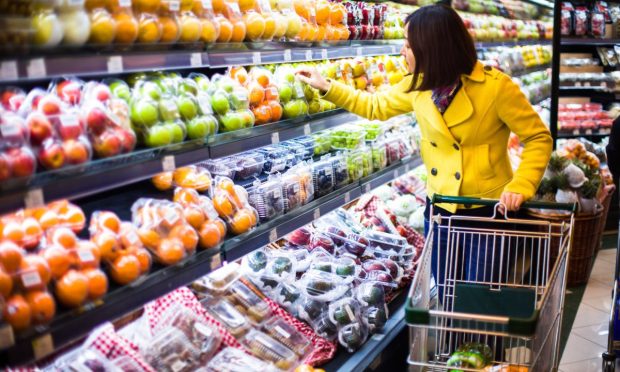Grocers Tap New Technologies to Woo Price-Sensitive Shoppers

This week in grocery, Stop & Shop expands its digital discounts and grocers tap BNPL.
Ahold Delhaize-owned Stop & Shop, a grocer with more than 400 stores across five Northeastern states, announced Monday (April 3) that it is expanding its partnership with digital marketplace Flashfood, which offers discounts on items nearing their best-by and expiration dates, to more than 60 New York stores.
“Providing value and variety to our customers with a focus on reducing our carbon footprint is at the forefront of what we do,” Tarik Stewart, the grocer’s regional vice president of operations, said in a statement. “We’re proud to now offer the Flashfood marketplace to our New York customers to help offer sustainable shopping options with ways to also save significantly on groceries.”
Now, the grocer offers this digital marketplace in nearly 170 stores in four out of the five states in which it operates. The partnership offers the retailer a way to provide price-sensitive customers with less expensive products without compromising its own margins, driving sales from items that may otherwise have been thrown away.
The move comes as grocery shoppers, feeling the pressure of rising prices and other macroeconomic pressures, increasingly look for less expensive options. As such, grocers have to work harder to maintain their loyalty.
Research from the latest edition of PYMNTS’ Consumer Inflation Sentiment report, “Consumer Inflation Sentiment: The False Appeal of Deal-Chasing Consumers,” which draws from a survey of more than 2,100 United States consumers, revealed that 44% of grocery shoppers are deal chasers, willing to go wherever they will get the best price.
“Shoppers are clipping more coupons,” Sean Turner, co-founder and CTO at retail technology company Swiftly, told PYMNTS in a recent interview, noting that consumers are more focused on planning their grocery shopping trips “They’re really trying to compare prices across different stores. They might go to the Walmart website or app and see what the product costs there, then launch [another retailer’s] app and search for the same product there to see where it’s cheapest or where they can get a coupon or a discount.”
Albertsons Continues Private-Label Innovation as Consumers Trade Down
As Stop & Shop looks to drive sales with price-sensitive consumers by offering discounts on would-be food waste, Albertsons aims to do the same by providing lower-priced private-label alternatives to national brands.
Just two weeks after announcing relaunching its Open Nature brand of health-focused foods, the grocery giant announced another update to its private-label offerings on Thursday (March 30), redesigning its O Organics brand in an effort to draw new customers to its offerings.
“Many of our customers have embraced an organic lifestyle and consider it to be a meaningful part of their personal values,” Brandon Brown, the grocer’s SVP of own brands, said in a statement. “As the brand has grown with the ever-evolving needs of our customers, we felt its visual identity should, too.
These two moves in short succession suggest that the grocer’s private-label offerings are key to its strategy for maintaining consumers’ loyalty in the face of the current economic pressures.
They come as many consumers seek lower-priced alternatives for their typical grocery products. Research from the “Consumer Inflation Sentiment: Perception Is Reality,” for which PYMNTS surveyed more than 2,100 consumers in December, reveals that 69% of consumers have made changes to their grocery shopping lists in the last year in response to rising prices. Thirty-five percent have switched to purchasing cheaper, lower-quality groceries.
As Budgets Get Tighter, Grocery Shoppers Tap BNPL
These economic pressures can be so intense that shoppers are even beginning to pay for their groceries in installments. A recent Adobe Analytics report noted that shoppers are increasingly using buy now, pay later (BNPL) to buy food, with the grocery industry’s total share of BNPL transactions increasing 40% in the January and February.
“The rise of buy now, pay later usage for groceries tells us that consumers are likely making bigger purchases online to take advantage of special promotions and stock up on staples, thus managing living expenses in more flexible ways,” said Vivek Pandya, lead analyst of Adobe Digital Insights.
The increase comes as many consumers have issues paying for the essentials they need each month. Research from the latest edition of PYMNTS’ New Reality check study, “New Reality Check: The Paycheck-to-Paycheck Report — The Supplemental Income Edition,” which draws from a February survey of more than 4,000 U.S. consumers, finds that one in five live paycheck to paycheck with issues paying bills.

